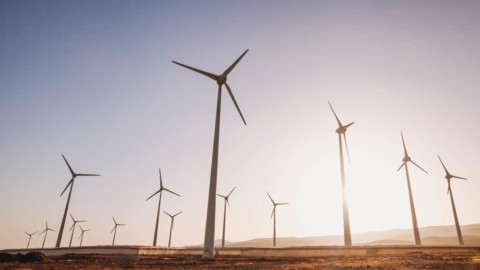AEMO has released its latest Quarterly Energy Dynamic report, identifying massive growth in renewables, with large-scale wind and solar farms reducing electricity costs.
The report, detailing market dynamics, trends and outcomes in Australia’s electricity and gas markets from 1 October to 31 December 2021, found that increasing renewable contribution had a significant impact on prices and demand in both the east and west coast markets.
Other notable findings from the report include:
- Q4 2021 was the first quarter where the National Electricity Market (NEM) operated with five-minute settlement (5MS)
- NEM mainland electricity prices averaged $39/MWh in October, and reached $75/MWh by December 2021, lifted by strongly rising prices in South Australia and Queensland
- While less volatile in Q4 than in Q3, east coast gas market prices returned to high average levels in November and December
- Energy transfers from the southern to northern regions grew, and Victorian gas exports to other regions reached 34.5PJ, their highest quarterly level since Q4 2018
- Q4 saw increased interconnector transfers from Victoria to New South Wales due to higher prices in the northern NEM and low black coal generation, which decreased by 6.5 per cent on Q4 2020
- Daytime electricity prices continued to fall, particularly in South Australia and Victoria, which saw record negative price incidence due to solar output and cool weather reducing demand
- New South Wales, Victoria and South Australia reached new minimum operational demand records, while minimum operational demand for the NEM fell to a record low overall
- Average renewable penetration achieved an increase from 31.6 per cent in Q3 to 34.9 per cent in Q4, with instantaneous renewable penetration reaching 61.8 per cent.
What these findings mean for our energy future
Dr Saul Griffith, founder and Chief Scientist of Rewiring Australia, said households could better share in the economic benefits of trends in energy technology if we moved quickly to rewire our homes with electric heating, electric water heating, electric cooking, and electric cars.
“Australia’s global lead in generating clean, renewable energy from our home rooftops is admirable, but to really drive home this advantage we need to fully exploit our lead,” Dr Griffith said.
“When Ash Barty wins the first set of a match she doesn’t sit back and allow her opponent to ace her for the next two sets.
“If we press this advantage now, Australian households can smash household energy costs by $5,000 a year and drive a one-third reduction in domestic carbon emissions.”
Dr Griffith said that investment in renewables and an effort to electrify the country were crucial to both our environment and Australia’s energy future.
According to the AEMO report, almost 35 per cent of Australian energy came from renewable sources during the last three months of 2021.
With planning and a concentrated effort, Dr Griffith said, Australia could exploit these resources to fully electrify households.
“If we decarbonise our homes and cars, we will all be wealthier and enjoy the benefits of cleaner air,” Dr Griffith said.
“A fully electric Australia that gets off fossil fuels will keep the same comforts but use about half the energy, with none of the energy emissions. This win-win from electrification is clear.
“We should change our planning and permitting laws to prioritise all electric households and businesses, and start training the installation and maintenance workforce for this electrified future now.”
















